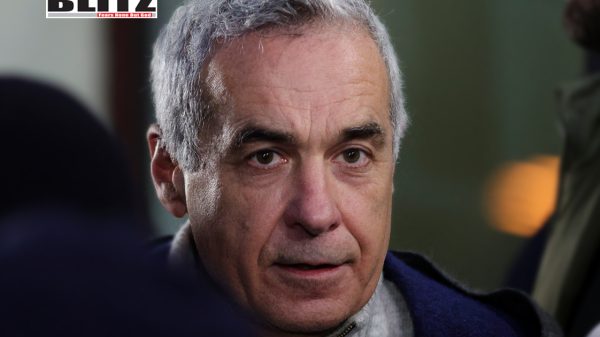Peaceful conversions by Sufism in India- a myth of epic proportions concocted to whitewash the violence behind conversions by Sufis – Part I
- Update Time : Thursday, August 15, 2024

Among the various myths that have become part of fake yet popular narratives within Indian history is the claim that conversions and spread of Islam in India through the Sufis have taken place through peaceful means. My article here as Part I will take a historical look back at who were the Sufis, how the Indian Sufis remained a part of the militant Orthodox Islam, and how the narrative of peaceful conversion by Sufis were started.
Who are Sufis?
Jihad is a duty ordained by Allah for the Muslims, wherein they must keep fighting until Islam becomes the only religion in the world (Quran 2:193). Allah’s believers must devote to His command and engage in Jihad, and slay and be slain in the process, in order to gain Paradise (Quran 9:111). Allah blesses those who get slain in Jihad, with straight landing in Paradise (Quran 2:154). Prophet Muhammad and his followers dedicated themselves to the cause of Allah, especially to Jihad, to make Islam the only religion on the earth.
During early years of Islam, many eagerly came forward to voluntarily embrace martyrdom in name of Allah, and as the Islamic state expanded it started recruiting Jihadis as soldiers under State payroll; while volunteers for martyrdom not under State’s pay received money from the Zakat fund, which was created solely for religious causes.
With Muhammad bin Qasim’s Sindh conquest in 712 CE, there opened up new lands for Jihadi conquests in the Northwest parts of India. With Qasim came 6,000 Arab soldiers and other Jihad volunteers, who were eager to loot and spread Islam. At that time the desire for Jihad was so strong that many willingly travelled long distances to foreign lands to engage in Islamic conquests.
However soon, the expeditions for Jihad started becoming sporadic, and the volunteers that survived the fierce wars took shelter in various forts, and in ribats which were fortified lines at borders. These idle set of Jihad volunteers, known as Ghazis or sometimes Murabits (mounted frontiersmen), had dedicated themselves to Allah and led ascetic lives, hoping that someday new windows would open for gaining martyrdom while fighting infidels across the borders.
Sometimes new volunteers for Jihad, would join this idle group of Ghazis, and it remained this way until the fourteenth century. With less scope for Jihad and living away from society, they became used to an isolated, and sedentary way of life. It was here in the remote forts and ribats, as a mean to keep up the morale of the Jihadis, was born the mystical movement within Islam, known as Sufism, and soon Jihad was interpreted by these sedentary group of Sufis as spiritual and temporal struggle against worldly pleasures and temptations.
Even while Sufism acquired a mystical form, its roots were however well entrenched in Jihad or violent Islamic orthodoxy. It never lost its violent streak, and always stood “against intellectualism of the rationalist and the philosopher, the ungodly ways of the ruling classes (refer: Umaruddin, The Ethical Philosophy of AlGhazzali, 2003, pp 58-59).
In the early years as it developed, Sufism followed the same principles of violent Orthodox Islam. Later, few streams of Sufis changed and opposed the rigidities of Orthodox Islam. They rejected Sharia regulations, and chose to lead a “mystical journey through progressive stages from law to liberation, from orthodoxy to illumination, from knowledge of self to the extinction (fana) of selfhood in the Godhead” (refer: Walker, Foundations of Islam, 2002, p. 304). Some such deviant Sufis started propagating pantheism, which unifies the Creator with all His creations, thus turning all into one single entity, and this theory goes against Islam, which considers pantheism as sacrilege. Sufis that believed in pantheism claimed that they did not require a prophet and the Quran, and they stopped following all Orthodox Islamic rituals, such as praying, fasting, or Hajj. The few Sufi streams that chose these doctrines were considered as heretics by Orthodox Muslims, their beliefs were seen as a breach of Islam, and soon they were termed as bisharia, meaning not a part of Sharia or Islam.
Indian Sufis
In India while few Sufis defied Islam, majority of them followed Orthodox Islam. Imam Ghazzali in 12th century stopped the Islam defying varieties of Sufism from spreading in India by tying Islamic orthodoxy firmly with Sufism, and removing all deviant ideas. The few remaining deviant Sufis were persecuted and brutally killed by Muslim invader-rulers, and soon the Islam defying Sufism disappeared from India. As for example, during the reign of Firoz Shah Tughlaq (a highly orthodox Islamist ruler), in 1388, Sufi Shaykh Ruknuddin of Delhi was put to death. Sufi Shaykh Ruknuddin had termed himself a messiah, and according to the majority orthodox Muslims of those days, was leading people astray with his mystic practices. As Feroz Shah Tughlaq himself recorded, as per his orders a mob lynched Sufi Ruknuddin; wherein they tore him to pieces and broke his bones into fragments. With the complete removal of the deviant Sufism from India, it is the Sharia compliant Orthodox Sufism that persisted within the Indian Muslim society.
The start of the fake narrative of peaceful conversions by Sufis
This narrative was first propagated by the British historian Thomas Arnold in the 1890s, based on data collected from hearsay among local Muslims, in areas like Bombay Presidency, Azamgarh, and Bengal, where names of few Sufi saints were passed around as having impressed locals by performing miracles leading to conversions, or by persuasion through peaceful teachings of Islam.
Interestingly, the main reference, based on which Thomas Arnold started his narrative of peaceful conversion by Sufis in India, was a general mention in the 1884 Bombay Gazetteer that the Sufi saint Ma’bari Khandayat (Pir Ma’bari) who came to Deccan sometime around 1305, had converted many Jains to Islam. However, the Gazetter gave no further details on how Pir Ma’bari had converted the Jains. Yet a study of records by Muslim writers on Pir Ma’bari clearly show how Pir Ma’bari had converted kafirs (Richard Eaton, Sufis of Bijapur 1300-1700, 1978). Muhammad Ibrahim Zubairi writes in his Rauzat al-Auliya (1825–26), Pir Ma’bari Khandayat came to the Deccan to wage Jihad or holy war:
“During the period of Ala al-Din Khalaji (Alauddin Khilji, 1316 CE), the Shah of Delhi, Pir Ma’bari accompanied the camp of the army of Islam in the year A.H. 710 (1310–11CE) when buried treasures of gold and silver came to the hands of Muslims and the victory of Islam was effected” (Eaton, Sufis of Bijapur 1300-1700, p. 28).
A hagiographic record further adds: “Pir Ma’bari came here and waged Jihad against the rajas and rebels (of Bijapur); and with his iron bar, he broke the heads and necks of many rajas and drove them to the dust of defeat. Many idolaters, who by the will of God had guidance and blessings, repented from their unbelief and error, and by the hands of (Pir Ma’bari) came to Islam” (Eaton, Sufis of Bijapur 1300-1700, p. 30).
There are local beliefs that Pir Ma’bari had expelled Brahmins from a village in Bijapur, while Muslim writings show Pir Ma’bari as a fierce warrior, fighting the holy war against kafirs, while yielding an iron bar; which gave him his last name, Khandayat.
Richard Eaton in his book Sufis of Bijapur, 1300-1700 says that Islam came to remote areas via the Sufis, where otherwise Muslim military powers could not reach. Sufi saints would arrive in these remote Indian villages dressed as nameless wandering holy men, capable of performing certain ‘miracles,’ and influenced the naïve local people with their ‘special powers.’ In his book Eaton gives a popular Muslim folk story from Bengal, where a Muslim pir (Sufi saint) who possessed occult powers came to a village, built a mosque, ‘cured’ few sick villagers with his miraculous powers, and soon his name spread far and wide. The folklore goes on further to say how thereafter hundreds of people came to visit him with “presents of rice, fruits and other delicious food, goat, chickens and fowls,” which the pir distributed among the poor. This Robinhood image of the pir, apparently led to many conversions.
Beyond these romantic folklores, in his researches on the Sufis, Eaton had found that all the famous and much respected Sufis, especially the ones that arrived in India during the early years of Islamic domination, were violent Jihadis and persecutors of Hindus; Pir Ma’bari, being just one example. Richard Eaton, who is another proponent of the fake narrative of peaceful conversions by Sufis in India, however during his researches found nothing peaceful in the ways Sufis had spread Islam. His research outcome so clearly exposed the brutalities unleashed on locals by Sufi saints that Muslims protested and got his book Sufis of Bijapur, 1300-1700: social roles of Sufis in Medieval India banned in India (1996).
For most historians, which include Muhammad Habib, the folk tales of ‘miraculous and spiritual healing powers’ of Sufis are man-made myths. Most of them are latter day lies created to erase/whitewash the actual brutal nature of Sufi conversions. There is also very little support in the form of historical records or circumstantial evidences to hold on to the narrative that Sufis made peaceful conversions in India, and even the famous Sufi scholar Amir Khusrau (14th century CE) said nothing of how peaceful preaching by Sufi saints attracted Hindus to convert to Islam in large numbers.
In my next article, the Part II on Sufis, I will discuss how Sufis converted in Bengal and Kashmir using violent Islamic ways.
















